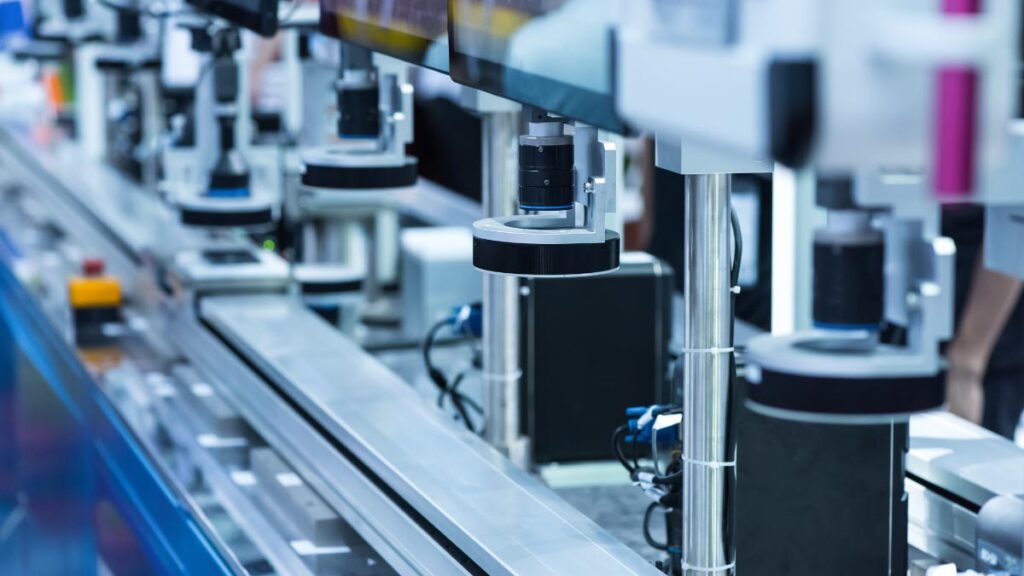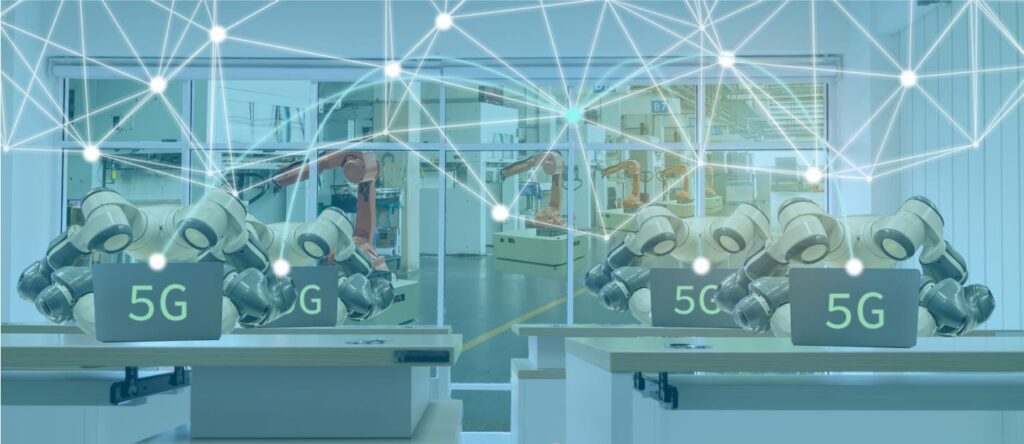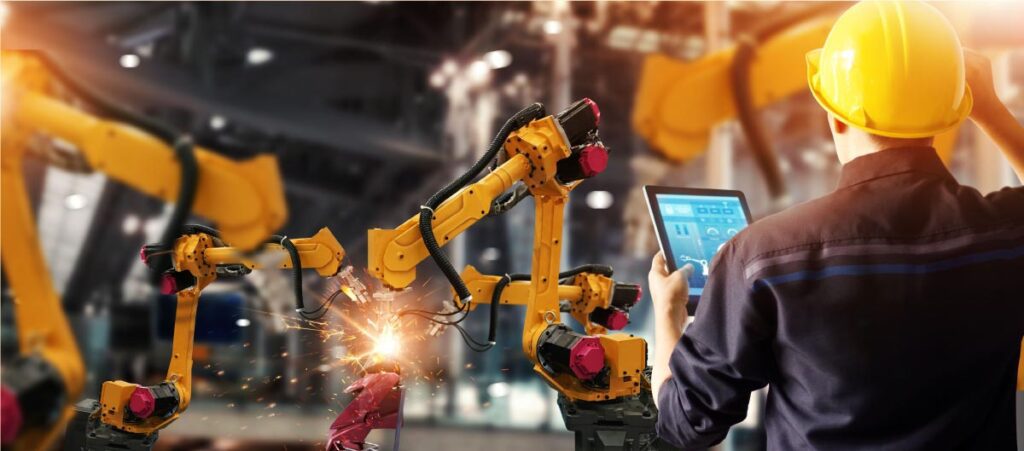
It’s been two hundred years since the start of the Industrial Revolution where the mechanized manufacturing industry steamed through to bring about mass-produced goods to the market. And now, with 5G on the horizon, the industry will face its biggest and most widespread overhaul to date.
The fourth Industrial Revolution, often referred to as “Industry 4.0,” will usher in smart factories. In these futuristic factories, connected devices can sense their environments and interoperate with each other, all while making decentralized decisions.
Experts across the aisle foresee this transformation to rely on the capabilities of the next-generation 5G networks; this demands a fluid infrastructure to maintain. In parallel, the day-to-day consumer demands newer, better, and faster upgrades to keep up with the tide.
This demand breaths down the neck of manufacturers to not only innovate and create at a much faster rate, but have the ability to produce a higher standard of products at lower costs.
As the devices in tomorrow’s factories grow and become more sophisticated, manufacturers understand that they must be able to adapt the networks that connect them quickly, reconfiguring them at will.
According to a study by telecom equipment manufacturer called the 5G Business Potential, manufacturing is one of the most important sectors for innovation and the industry digitization of 5G technology. The expected market in 2026 will be USD 113 billion, meaning a 7 percent growth from current service revenue forecasts.
“Our fast and secure 5G connectivity enables the smart factory with agile operations and flexible production, utilizing industrial solutions such as automated warehouses, automated assembly, packing, product handling and autonomous carts,” says Erik Simonsson, Head of the Ericsson USA 5G Smart Factory.

Even now, smart factories are starting to mushroom across the globe, the race to optimize production, improve quality, and react to new trends has already begun.
“Industry 4.0 brings together technology advances in the Internet of Things (IoT), artificial intelligence (AI), big data, cloud and edge computing to help manufacturers advance towards a higher degree of automation and apply digital functions to physical processes,” a recent report by the GSM Association (GSMA) stated.
The report also highlighted that connectivity is a key enabler of Industry 4.0.
There is a range of technology options available to manufacturers at present, but 5G is emerging as a key connectivity solution, particularly as many of its technical capabilities have been designed with Industry 4.0 applications in mind:
- Ultra-reliable low latency communication is vital for real time communications between machines.
- Greater bandwidth and support for higher device density enables use cases that generate more data traffic and host a greater number of devices/sensors.
- Network slicing allows virtual separation of networks, enhancing security and reliability.
- Mobile edge computing allows critical network functionality to be retained at the edge, further enhancing resilience and operational continuity.
“Manufacturers aim to monitor more and more elements of the production process and move towards greater automated production through the use of AI. So smart manufacturing is promoting an evolution of large-scale automation rather than a transformation of the factory floor,” GSMA’s study said.
Automated production lines
Communication delays on the factory floor can be catastrophic. Not only do they put a mediocre cap on productivity, but also add to the production cost by subsequently wasting energy and natural resources during assembly.
“When an ‘active’ production line is not producing, the line is increasing product costs unnecessarily, while systems that efficiently control production lines drive down these unnecessary costs,” a report by tech giant Samsung stated.
The rollout of 5G will enable factories to commence real time communication between systems to remotely control the manufacturing process efficiently with ultra-low latency. “For example, sensors along the line send real time information to the scheduling system to track the progress of the product,” the report highlighted.
Thus based on this precise level of tracking, Artificial Intelligence will be able to calculate the consumption rate of components across all production lines. This will aid to ensure delivery of parts needed to produce the components accordingly.
“While existing technologies enable this type of automation, 5G takes the system to the next level by supporting up to one million sensors, connected machines, and smartphones. A manager can access production metrics quickly and accurately and make real time decisions to control production efficiency right from his or her smartphone while sitting in a meeting,” the report explained.
In addition, in the unlikely event of component unavailability, or if the production line requires immediate maintenance, the person in charge will have the information to make the best decision going forward.
With the ability to adjust quickly, the efficiency- and profitability – of the production line increases, all because of the ultra-reliable communication benefits that 5G has over Wi-Fi.
Improving environmental safety
In today’s manufacturing environment, high resolution cameras and purpose-built safety sensors provide continuous real time monitoring that increases plant security and environmental safety.
“Wireless 5G-enabled cameras can be placed anywhere to capture and send high-quality images over high-speed connections to security staff or AI-enabled image processors to identify the need for a response – or not in the case of a false alarm,” Samsung’s report added.
With 5G’s extreme download and upload speeds, monitoring sensors on safety suits becomes ten times easier and more accurate, which also applies to personnel location, as well as other values that prioritize an employee’s health and safety on the factory floor.
“The 5G network can not only alert the emergency team of the need to respond to a place but can also provide additional information about the incident. For example, workers who wear sensors will have their vital signs, like pulse and respiration rates provided to the emergency responders. And if there are possible environmental challenges, the network can send statistics like air temperature and quality to alert the responders to any environmental hazards that may be present in the area,” the report explained.
Improved quality control
The search for effective and fast quality-control mechanisms can finally be put to an end with the help of high bandwidth low-latency capabilities.

“Factories with 5G connectivity can incorporate real time video streams with computer-based analysis to quickly identify and remove defective products from the line to improve product quality,” the report said.
These smart-QC-enabled factories have the speed, bandwidth, and reliability to send high-definition images and video to the defect-analysis-engine for time-critical product-quality decisions.
The transmission and processing happens in a matter of seconds and allows the system enough time to alert the manager to remove defective items. This approach is more effective than human analysis because the computer is faster at detecting flaws than humans and is more accurate.
With 5G slowly transitioning from a distant mirage to reality, tech giants and manufacturers have already kickstarted their efforts in constructing a number of smart factories across the world – hoping to hit the ground running.